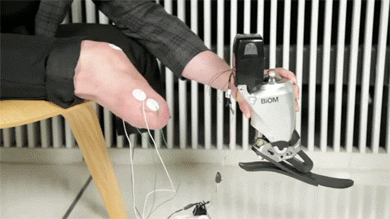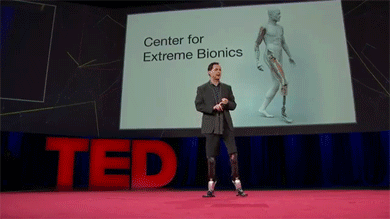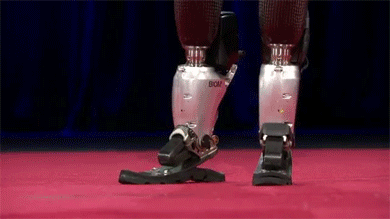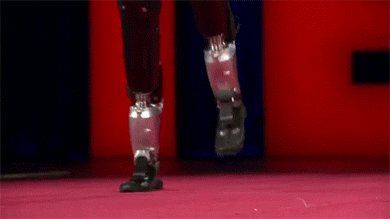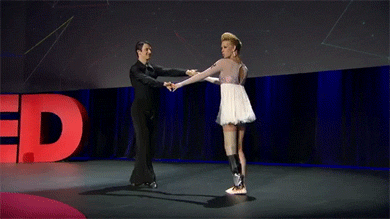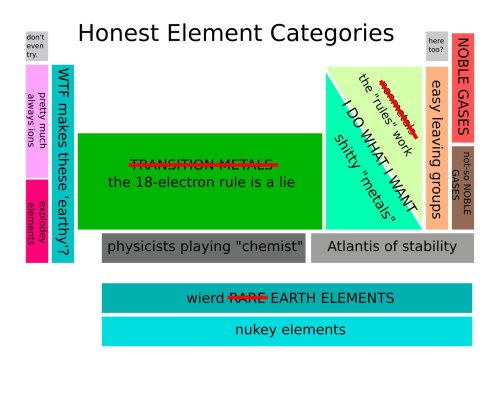Don’t Try This At Home!









Don’t try this at home!
I talked about the interesting structure of graphite (aka pencil lead) in our latest video:
But I didn’t have time to touch on one of the fascinating side effects of this structure - graphite’s conductivity. A single, two-dimensional sheet of graphite (known as graphene) is the most conductive material we know about. Diamond is among the least conductive materials we know about.
Impure graphite - like the stuff we find in pencils - is somewhere in between. It’s more conductive than sea water and less conductive than steel. As free electrons flow through it, it lights up like a filament and puts out a lot of heat.
Some risk-taking YouTubers (MausolfB Education and ElectroBoom) demonstrated this property so you don’t have to.
Diamond photo credit: Macroscopic Solutions, Graphite photo credit: DerHexer
More Posts from Stubborn-turtle-blog and Others
Could be nothing, could be a really bad something

Eugenics was massive in the US, however much we pretend it wasn't
The U.S. Supreme Court in 1927 decided, by a vote of 8 to 1, to uphold a state’s right to forcibly sterilize a person who was deemed unfit to procreate. The case Buck v. Bell legitimized the eugenics movement – yes, the thing Hitler and the Nazis believed in – and directly led to the sterilizing of 70,000 American citizens against their will.

A striking example of the strength of the British Empire in the early 1900s: In 1911 Britain completed the “All Red Line,” a network of telegraphs that linked its possessions. The system was so redundant that an enemy would have had to cut 49 cables to isolate the United Kingdom, 15 to isolate Canada, or 5 to isolate South Africa. As a result, British communications remained uninterrupted throughout World War I.
Space Station Science: Biological Research

Each month, we highlight a different research topic on the International Space Station. In August, our focus is biological research. Learning how spaceflight affects living organisms will help us understand potential health risks related to humans on long duration missions, including our journey to Mars.

Cells, microbes, animals and plants are affected by microgravity, and studying the processes involved in adaptation to spaceflight increases our fundamental understanding of biological processes on Earth. Results on Earth from biological research in space include the development of new medications, improved agriculture, advancements in tissue engineering and regeneration, and more.
Take a look at a few of the biological research experiments performed on space station:
Biomolecule Sequencer

Living organisms contain DNA, and sequencing DNA is a powerful way to understand how they respond to changing environments. The Biomolecule Sequencer experiment hopes to demonstrate (for the first time) that DNA sequencing is feasible in an orbiting spacecraft. Why? A space-based DNA sequencer could identify microbes, diagnose diseases and understand crew member health, and potentially help detect DNA- based life elsewhere in the solar system.
Ant-stronauts

Yes, ant-stronauts…as in ants in space. These types of studies provide insights into how ants answer collective search problems. Watching how the colony adapts as a unit in the quest for resources in extreme environments, like space, provides data that can be used to build algorithms with varied applications. Understanding how ants search in different conditions could have applications for robotics.
TAGES

The TAGES experiment (Transgenic Arabidopsis Gene Expression System) looks to see how microgravity impacts the growth of plant roots. Fluorescent markers placed on the plant’s genes allow scientists to study root development of Arabidopsis (a cress plant) grown on the space station. Evidence shows that directional light in microgravity skews root growth to the right, rather than straight down from the light source. Root growth patters on station mimic that of plants grown at at 45% degree angle on Earth. Space flight appears to slow the rate of the plant’s early growth as well.
Heart Cells

Spaceflight can cause a suite of negative health effects, which become more problematic as crew members stay in orbit for long periods of time. Effects of Microgravity on Stem Cell-Derived Cardiomycytes (Heart Cells) studies the human heart, specifically how heart muscle tissue contracts, grows and changes in microgravity. Understanding how heart muscle cells change in space improves efforts for studying disease, screening drugs and conducting cell replacement therapy for future space missions.
Medaka Fish

Chew on these results…Jaw bones of Japanese Medaka fish in microgravity show decreased mineral density and increased volume of osteoclasts, cells that break down bone tissue. Results from this study improve our understanding of the mechanisms behind bone density and organ tissue changes in space.
These experiments, and many others, emphasize the importance of biological research on the space station. Understanding the potential health effects for crew members in microgravity will help us develop preventatives and countermeasures.
Make sure to follow us on Tumblr for your regular dose of space: http://nasa.tumblr.com
Getting to Mars: What It’ll Take
Join us as we take a closer look at the next steps in our journey to the Red Planet:
The journey to Mars crosses three thresholds, each with increasing challenges as humans move farther from Earth. We’re managing these challenges by developing and demonstrating capabilities in incremental steps:
Earth Reliant

Earth Reliant exploration is focused on research aboard the International Space Station. From this world-class microgravity laboratory, we are testing technologies and advancing human health and performance research that will enable deep space, long duration missions.
On the space station, we are advancing human health and behavioral research for Mars-class missions. We are pushing the state-of-the-art life support systems, printing 3-D parts and analyzing material handling techniques.
Proving Ground

In the Proving Ground, we will learn to conduct complex operations in a deep space environment that allows crews to return to Earth in a matter of days. Primarily operating in cislunar space (the volume of space around the moon). We will advance and validate the capabilities required for humans to live and work at distances much farther away from our home planet…such as at Mars.
Earth Independent

Earth Independent activities build on what we learn on the space station and in deep space to enable human missions to the Mars vicinity, possibly to low-Mars orbit or one of the Martian moons, and eventually the Martian surface. Future Mars missions will represent a collaborative effort between us and our partners.

Did you know….that through our robotic missions, we have already been on and around Mars for 40 years! Taking nearly every opportunity to send orbiters, landers and rovers with increasingly complex experiments and sensing systems. These orbiters and rovers have returned vital data about the Martian environment, helping us understand what challenges we may face and resources we may encounter.

Through the Asteroid Redirect Mission (ARM), we will demonstrate an advanced solar electric propulsion capability that will be a critical component of our journey to Mars. ARM will also provide an unprecedented opportunity for us to validate new spacewalk and sample handling techniques as astronauts investigate several tons of an asteroid boulder.
Living and working in space require accepting risks – and the journey to Mars is worth the risks. A new and powerful space transportation system is key to the journey, but we will also need to learn new ways of operating in space.
We Need You!

In the future, Mars will need all kinds of explorers, farmers, surveyors, teachers…but most of all YOU! As we overcome the challenges associated with traveling to deep space, we will still need the next generation of explorers to join us on this journey. Come with us on the journey to Mars as we explore with robots and send humans there one day.
Join us as we go behind-the-scenes:
We’re offering a behind-the-scenes look Thursday, Aug. 18 at our journey to Mars. Join us for the following events:
Journey to Mars Televised Event at 9:30 a.m. EDT Join in as we host a conversation about the numerous efforts enabling exploration of the Red Planet. Use #askNASA to ask your questions! Tune in HERE.
Facebook Live at 1:30 p.m. EDT Join in as we showcase the work and exhibits at our Michoud Assembly Facility. Participate HERE.
Hot Fire Test of an RS-25 Engine at 6 p.m. EDT The 7.5-minute test is part of a series of tests designed to put the upgraded former space shuttle engines through the rigorous temperature and pressure conditions they will experience during a launch. Watch HERE.
Make sure to follow us on Tumblr for your regular dose of space: http://nasa.tumblr.com
-
 sciencebloggin reblogged this · 1 year ago
sciencebloggin reblogged this · 1 year ago -
 sporadicshepherdfriendbear reblogged this · 3 years ago
sporadicshepherdfriendbear reblogged this · 3 years ago -
 squeackygee liked this · 4 years ago
squeackygee liked this · 4 years ago -
 solely-02 liked this · 4 years ago
solely-02 liked this · 4 years ago -
 mrempathy61 liked this · 4 years ago
mrempathy61 liked this · 4 years ago -
 anderson7500 liked this · 4 years ago
anderson7500 liked this · 4 years ago -
 erysian reblogged this · 5 years ago
erysian reblogged this · 5 years ago -
 erysian liked this · 5 years ago
erysian liked this · 5 years ago -
 alexisntawkward liked this · 5 years ago
alexisntawkward liked this · 5 years ago -
 stevonnie-forever reblogged this · 6 years ago
stevonnie-forever reblogged this · 6 years ago -
 stevonnie-forever liked this · 6 years ago
stevonnie-forever liked this · 6 years ago -
 outlook990 liked this · 6 years ago
outlook990 liked this · 6 years ago -
 fiorefalinesti liked this · 6 years ago
fiorefalinesti liked this · 6 years ago -
 xhydralisk liked this · 6 years ago
xhydralisk liked this · 6 years ago -
 dauntlessdiva reblogged this · 6 years ago
dauntlessdiva reblogged this · 6 years ago -
 dauntlessdiva liked this · 6 years ago
dauntlessdiva liked this · 6 years ago -
 shadowwolfe-13 liked this · 6 years ago
shadowwolfe-13 liked this · 6 years ago -
 bease1977 liked this · 6 years ago
bease1977 liked this · 6 years ago -
 mom2ethanlogan reblogged this · 6 years ago
mom2ethanlogan reblogged this · 6 years ago -
 mom2ethanlogan liked this · 6 years ago
mom2ethanlogan liked this · 6 years ago -
 machet-t-omniversal liked this · 6 years ago
machet-t-omniversal liked this · 6 years ago -
 new-outset liked this · 6 years ago
new-outset liked this · 6 years ago -
 babu-r-itsme-blog liked this · 6 years ago
babu-r-itsme-blog liked this · 6 years ago -
 thelittlenessie liked this · 6 years ago
thelittlenessie liked this · 6 years ago -
 megxolotl liked this · 6 years ago
megxolotl liked this · 6 years ago -
 raini-ragnaroek liked this · 6 years ago
raini-ragnaroek liked this · 6 years ago -
 wanderer001 liked this · 6 years ago
wanderer001 liked this · 6 years ago -
 winningmushroom reblogged this · 6 years ago
winningmushroom reblogged this · 6 years ago -
 redhousehead reblogged this · 6 years ago
redhousehead reblogged this · 6 years ago -
 redhousehead liked this · 6 years ago
redhousehead liked this · 6 years ago -
 xstarfirekory reblogged this · 6 years ago
xstarfirekory reblogged this · 6 years ago -
 woahdudecoolboat liked this · 6 years ago
woahdudecoolboat liked this · 6 years ago -
 aconstantallegory liked this · 6 years ago
aconstantallegory liked this · 6 years ago -
 jojolimons liked this · 6 years ago
jojolimons liked this · 6 years ago -
 krollearning reblogged this · 6 years ago
krollearning reblogged this · 6 years ago -
 butwithglasses reblogged this · 7 years ago
butwithglasses reblogged this · 7 years ago -
 stephennnn311-blog liked this · 7 years ago
stephennnn311-blog liked this · 7 years ago -
 asenseofnicethings liked this · 7 years ago
asenseofnicethings liked this · 7 years ago -
 neuronium reblogged this · 7 years ago
neuronium reblogged this · 7 years ago -
 the3st reblogged this · 7 years ago
the3st reblogged this · 7 years ago -
 hemikym reblogged this · 7 years ago
hemikym reblogged this · 7 years ago
Gaming, Science, History, Feminism, and all other manners of geekery. Also a lot of dance
243 posts
